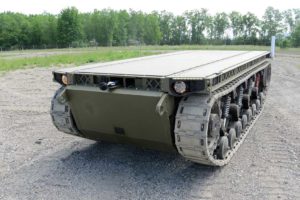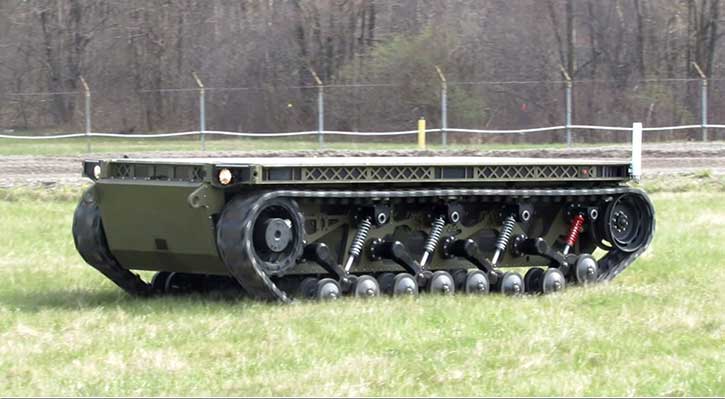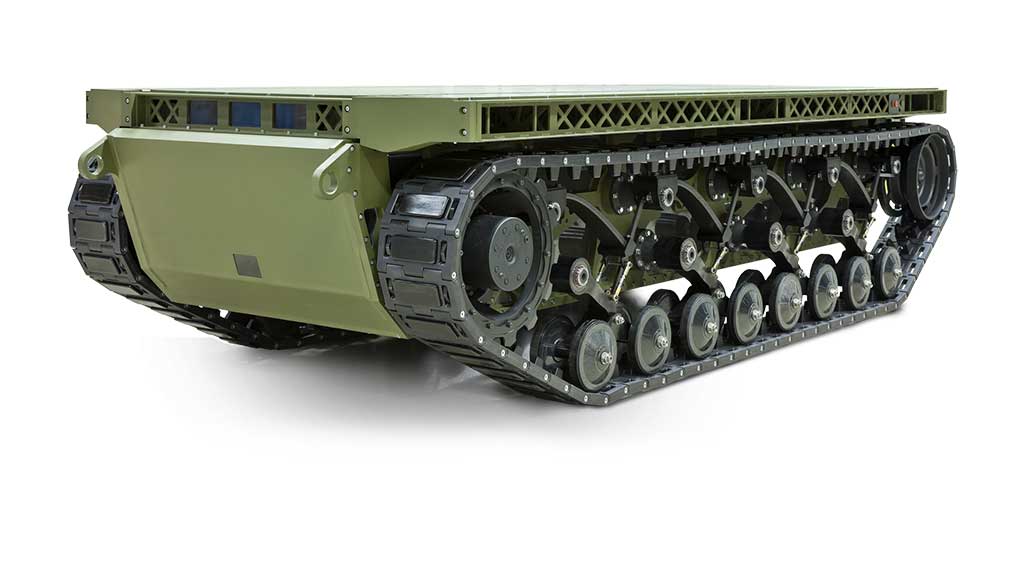
General Dynamics Land Systems (GDLS) has unveiled a tracked robotic platform (TRX) designed to meet the US Army’s ‘Robotic Combat Vehicle – Medium’ class requirement. GDLS First displayed the platform in a small model designated ‘TL1’ shown at the AUSA Annual Meeting in Washington DC last year. Yesterday, TRX starred at the center of GDLS’ virtual display at the virtual Modern-Day Marine expo, hinting more information will be provided at the upcoming AUSA virtual event next month.
“The TRX that you see on General Dynamics MDM display is an innovative solution that Land Systems developed. It is designed to be a multi-role vehicle that can fill any role – be it combat or service support for the military.” General Dynamics spokesperson noted. “This advanced capability can support virtually any mission package and be paired with any manned platform.”
The TRX platform design builds on the success of the Multi-Utility Tactical Transport (MUTT), a lighter robotic vehicle developed by GDLS, which was selected by the U.S. Army for the Small Multipurpose Equipment Transport (S-MET) program.

TRX leverages the Warfighter/Machine Interface (WMI) for teleoperation and autonomous operations. created by the Ground Vehicle System Center (GVSC). Additionally, Land Systems engineers have leveraged MUTT concepts of electronic architecture and control, realizing a high level of component commonality among our growing family of unmanned ground vehicles.
Meant to maintain pace with the Armored Brigade Combat Team (ABCT) and Stryker Brigade Combat Team (SBCT), TRX boasts a class-leading payload capacity of more than 10,000 pounds and a flat deck to accommodate any type of mission equipment package. At a gross vehicle weight of 10 ton, sling load is within the objective performance characteristics of the TRX. (Both CH-47F and CH-53K can lift this weight).
GDLS’ TRX joins a trend of medium robotic platforms developed by several companies. The Estonian Type-X from Milrem Robotics represents this trend with (12 ton GVW) along with the M5 Ripsaw developed by Textron Systems (10.5 ton GVW). All three are fitted with remotely controlled turret and are teleoperated, move by waypoint navigation, or in a ‘follow-me’ mode of operation. Pratt Miller’s EMAV is slightly smaller, designed for 6.35 ton GVW.
![]() Subscribe to read the full report
Subscribe to read the full report





















